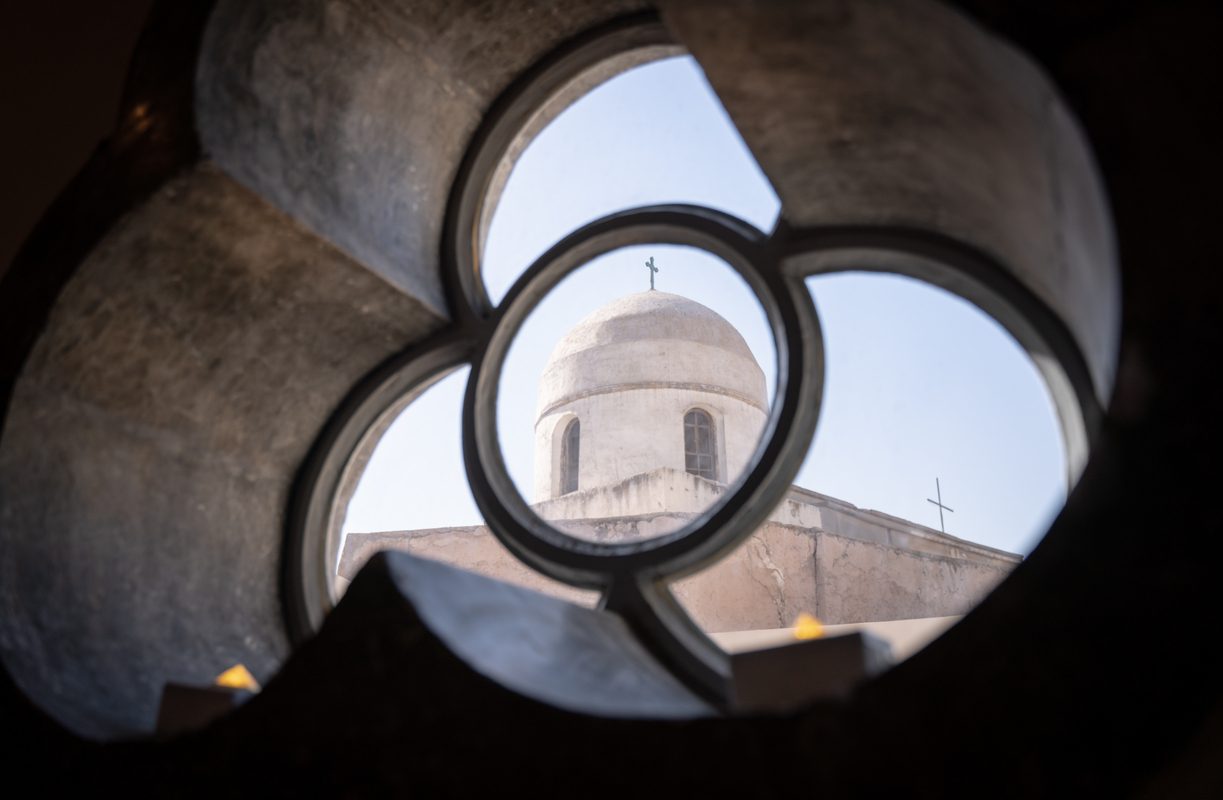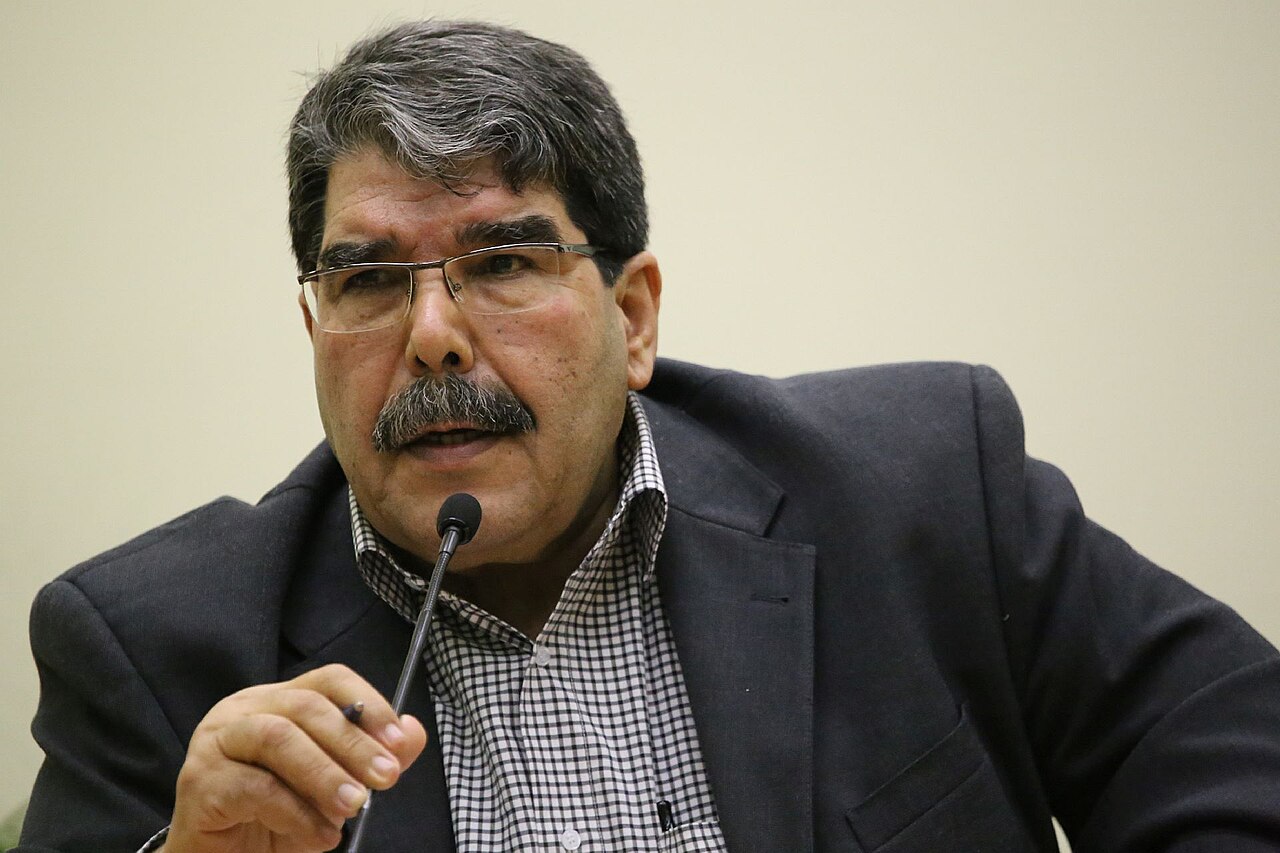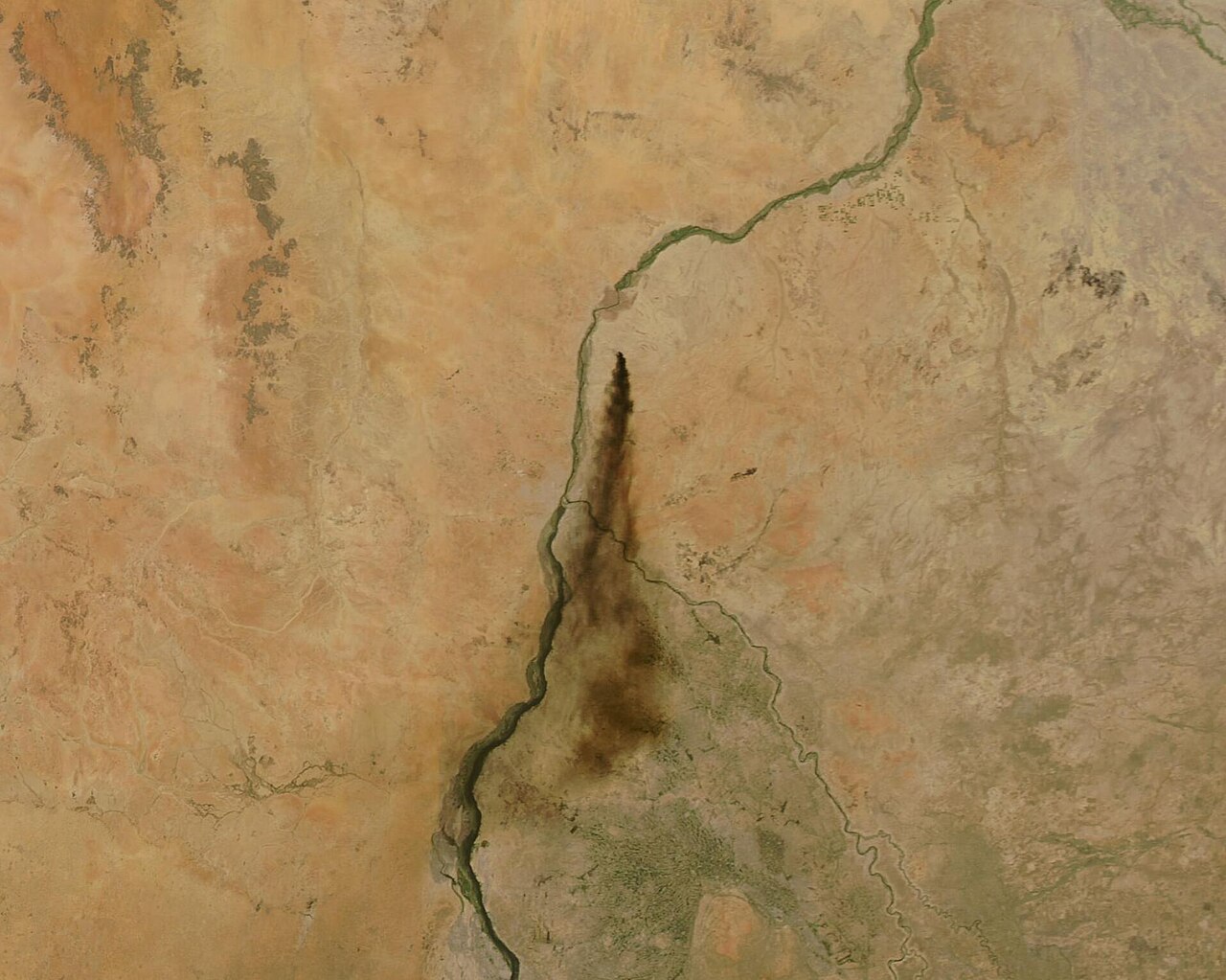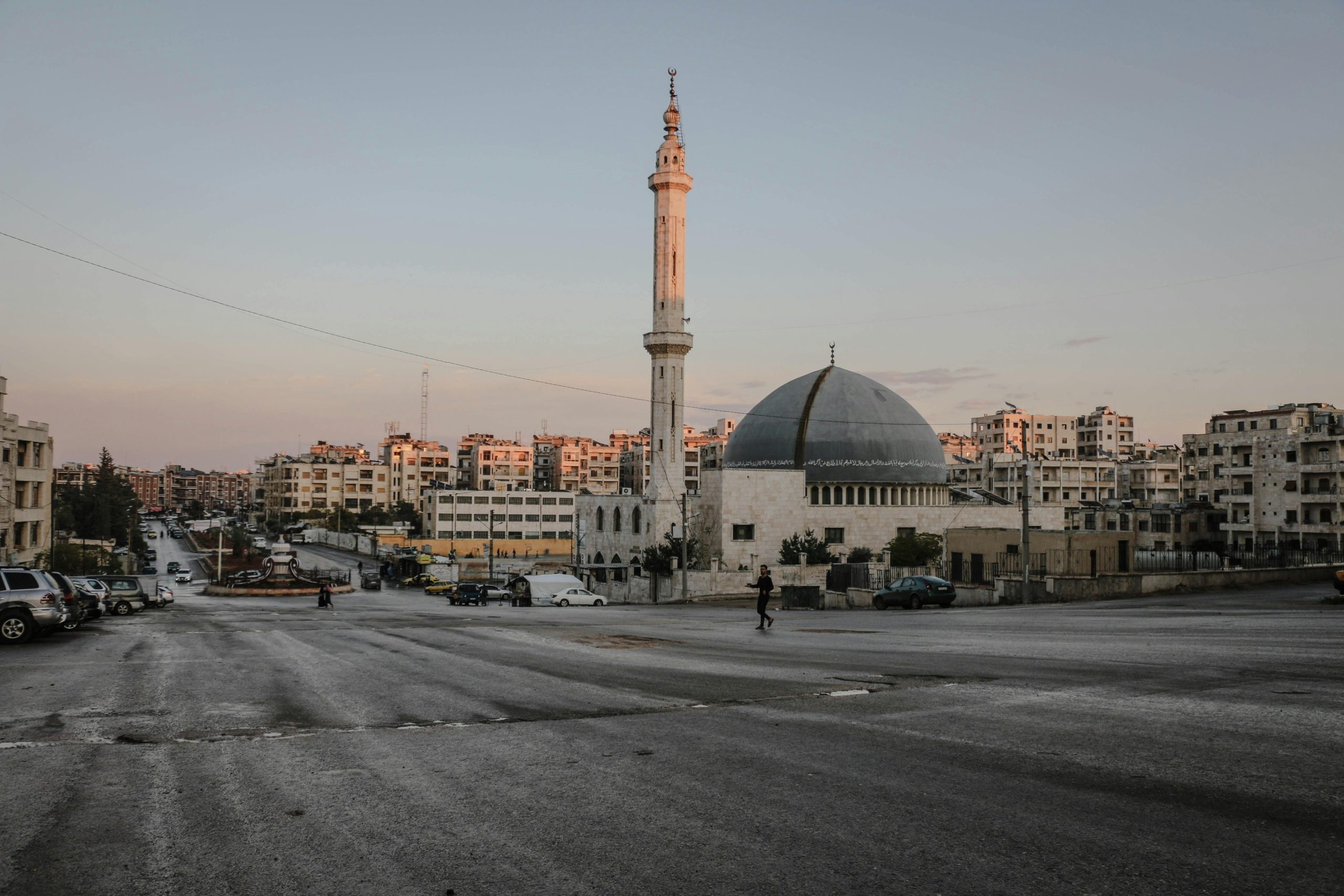The Vanishing Christians of Mosul
Mar Toma, Mosul | Picture Credit: Julia Zimmermann
As Mosul’s churches rise from the rubble, their bells toll for both memory and loss.
On the inauguration of two churches, rebuilt after they were devastated in the war against ISIS, there may be hope for Mosul’s Christians. But as Iraq’s Christian population continues to dwindle, the question is: can reconstruction alone restore a community that has been forced into exile?
The Cross as a Symbol of Safety
Taghreed slowed her car in Ankawa, the Christian district of Erbil in the Kurdistan Region of Iraq. The small cross that dangled from the rearview mirror swayed back and forth. She pointed out the window, to a nearby house, to a large cross, painted on the wall.
“Hurriyyah,” she said, “freedom.”
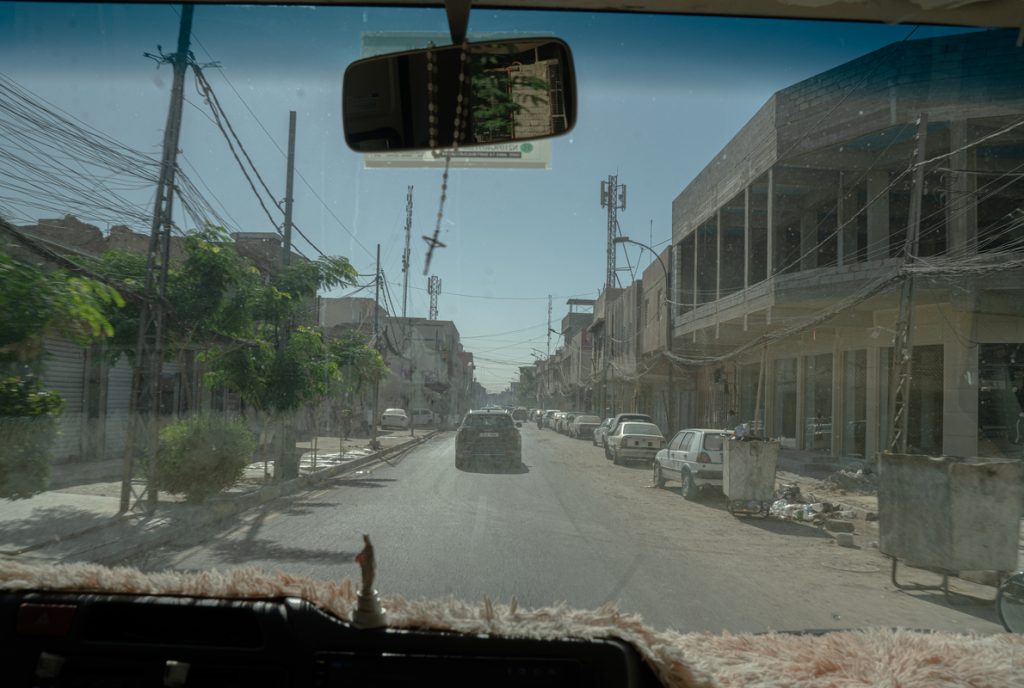
Such symbols are everywhere in Iraq: around necks, above doors, hanging from dashboards – they are visible declarations of faith in a land where Christianity has survived centuries of war, persecution, and exile.
West of Erbil is Mosul, a city that endured three gruesome years of ISIS occupation. When ISIS swept through western Iraq and north along the border of the Kurdistan Region in spring of 2014, almost all of Mosul’s remaining Christians fled overnight. Families packed what they could carry and joined the mass exodus toward nearby towns like Qaraqosh (Baghdida), Bartella, and Karamlesh – once vibrant Christian enclaves in the Nineveh Plains located east of Mosul. But these towns, too, soon fell under ISIS control.
By the summer, the Christian presence in Mosul – one of the oldest in the world – had all but vanished. The Islamic State looted churches and marked homes as its own property. They burned centuries-old manuscripts, tore down crosses, and forced priests and nuns into exile.
Many survivors sought refuge in the Kurdistan Region, where the capital Erbil and its Christian neighborhood of Ankawa became a sanctuary. Thousands of displaced families crowded into unfinished buildings, church courtyards, and tent-filled camps. Local parishes and international aid organizations provided food, shelter, and schooling for their children.
Three years later, in 2017, the international coalition liberated Mosul, but, though freeing it from ISIS, the battle devastated the historic city center. For many, what was meant to be a temporary refuge became a permanent exile, so even after Mosul’s liberation, few Christian families have returned. And the scars are still visible, both in the architecture and in the memories of its displaced Christian inhabitants, whose lack of trust in local security forces continue to keep them away.
Rebuilding Mosul’s Faith
Today, church bells toll once more in Mosul, their towers have risen from the rubble of the Old City and echo in the land that, once upon a time, was the heart of Mesopotamian Christianity. Last month, for the first time since ISIS’s defeat, two historic churches, Al-Tahira Chaldean Catholic church and Mar Toma (Saint Thomas) Syriac Orthodox church, reopened their doors. Their reconstruction was carried out by the French organization L’Œuvre d’Orient, in partnership with the State Board of Antiquities and Heritage in Iraq.

Reopening these churches, after they were occupied, vandalized, and destroyed by ISIS and later damaged again during coalition airstrikes, was a victory of remembrance.
The international press gathered to document what many were describing as “a resurrection of Mosul’s spirit.”
Cardinal Louis Raphaël Sako, patriarch of the Chaldean Catholic Church – who recently relocated from Baghdad to Erbil amid tensions with militias – attended the ceremony alongside Mosul’s mayor and religious figures from across the region. And buses brought Christians from Qaraqosh and Erbil to fill the pews for the first Mass in nearly a decade. The international press gathered to document what many were describing as “a resurrection of Mosul’s spirit.”

According to Father Hugues de Woillemont, director of L’Œuvre d’Orient, 3 million euros have been donated to these projects with the objective of bringing back the Christians of Mosul.
Additionally, the International Alliance for the Protection of Heritage (ALIPH) has supported nearly 50 projects across Iraq in the past 8 years, including Al-Saa’a Convent (Our Lady of the Hour) and the Al-Masfi Mosque. In total, ALIPH has spent 33 million USD for these projects, mostly in Mosul.
Speaking about the work done, French architect Guillaume Salins, one of the heritage experts involved in the project, explained, “As architects, we had to study traditional techniques and local materials. Our first objective was to observe what’s available, to respect the building, and use the local materials. And the second objective was to bring together the locals on the ground and reconnect them with these traditional techniques.”
But, despite the air of celebration and success, for the locals, the wounds of the past still run deep. Fear and trauma are etched into the memories of Iraq’s Christians, and instability across the country continues to weigh heavily on them.
Displacement and Doubt
Many Christians, like Taghreed and her husband Akram, fled Mosul twice: first in 2008, when Al-Qaeda’s influence grew, and again in 2014, when ISIS invaded. They rebuilt their lives in Erbil and resettled in Ankawa.
In their modest home, Taghreed welcomed visitors with tea and sweets. Their living room combined modern furniture with classic Middle Eastern touches.
“One day they shot at us while we were in a car,” she recalled. “The driver was killed, and my eight-year-old son was wounded in the head.”
There were kidnappings, ransom demands, and forced conversions. Her daughter was once forced to wear a hijab.

Answering the question of if she would ever return to Mosul, Taghreed didn’t hesitate: “Abadan,” she replied in Arabic, “Never.”
“…what we really need is things that help us live – money to rebuild our homes and restart our businesses, and trust between communities. Without that, what use are empty churches?”
And when told that the churches had been rebuilt, her tone hardened, “There was no government aid during the war, and even now our children study in container classrooms. We only survive by helping one another – through Christian associations like the Hammurabi Scouts. Some mothers make candles or small crafts to sell, just to earn a little income.”
For many displaced families, the church restorations in Mosul feel symbolic but distant – monuments to memory rather than instruments of survival.
“Renovations are important,” said Basam, a Christian from Qaraqosh who fled to Germany after receiving terrorist threats. “But what we really need is things that help us live – money to rebuild our homes and restart our businesses, and trust between communities. Without that, what use are empty churches?”
A City Reborn – But for Whom?
Driving into Mosul today, in 2025, the transformation is striking. The bullet holes that once marked nearly every wall have been filled and painted over – not always in matching colors, but enough to suggest renewal. Crossing the Tigris River into the Old City, cranes and construction sites now outnumber ruins. The city is regaining its beauty and, with it, hope that its Christian residents may yet return.
In, Erbil, however, life for Christians has taken on a different rhythm. People go out for drinks at night, large crosses adorn rooftops, and private clubs cater almost exclusively to the Christian community in Ankawa – where a new generation is trying to rebuild bridges.
The Return – an NGO founded by Dilan Adamat, an Iraqi Christian raised in France, and Rita, a Mosul native now pursuing her doctorate in Architecture in France – works to encourage displaced Iraqis to reconnect with their homeland. The Organization facilitates the return of those who have lived abroad and want to journey to the land of their ancestors.
In the organization’s coworking space in Erbil, Rita explained: “Every day I take a taxi to Mosul, do my work, and come back to Erbil. I don’t feel safe there yet, and my family in France worries about me all the time.”

By contrast, Erbil has been stable and calm, having experienced very few disruptions to daily life. Onel, a young Christian from Ankawa, while describing one of those rare disruptions recalled how in 2015 he survived a suicide bombing near the U.S. Embassy in Erbil: “We were just eating sandwiches after class when the car exploded.” Both he and his friend suffered life threatening burns. “It was the only terrorist attack that ever happened here. You can barely see my scars now – just on my hands and ears.”
The reconstruction of stone and paint can revive beauty, but not the community that once gave these walls their voice.
Quietly, he also added, “We Christians are always running – that’s why so few of us are left. My family fled Turkey generations ago. One day, someone will try to push us out again. Next time, we should stay and defend our home.”
The reconstruction of stone and paint can revive beauty, but not the community that once gave these walls their voice. For Iraq’s Christians, survival no longer depends on monuments, but on belonging; on finding a way to live safely and with dignity in the land where their faith once flourished.
The revival of Mosul’s cultural and spiritual heart may draw back not only Christians, but the diverse mosaic of communities that once defined the city: Arabs and Kurds, Christians and Muslims, Turkmen and Yazidis, all sharing in its history and future.
If peace endures, and if trust can take root once more, the reconstruction may do more than rebuild walls; it may rebuild coexistence.

Julia Zimmermann
Julia Zimmermann is a Beirut-based multimedia journalist specializing in photo, video, and written reportage. Her work focuses on Iraq, the Kurdistan Region, and Syria, where she documents political developments, social issues, and life in conflict-affected communities.

